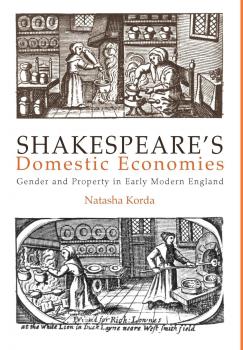ТОП просматриваемых книг сайта:
История
Различные книги в жанре История, доступные для чтения и скачиванияАннотация
Аннотация
Аннотация
Аннотация
Аннотация
То, что сегодня называют "мемасиками", а раньше именовали "крылатыми выражениями" существовало всегда. Люди, которые их придумали – изрядно вложились в сотворение того самого русского языка, которым мы сегодня пользуемся. В этой книге я отправляюсь на поиски авторов тех или иных устойчивых выражений в русском языке и о результатах докладываю вам. Все изображения, использованные в книге, находятся в Public Domain. На обложке – коллаж работы автора.
Аннотация
Общенациональная ежедневная газета, которая пользуется заслуженным доверием и уважением читателей. Круг интересов газеты – политика, экономика, культура и спорт, общественная жизнь и будни армии, городские новости и светская хроника. В каждом номере публикуются эксклюзивные репортажи, аналитика и комментарии высокопрофессиональных журналистов.
Информация о книге
Автор произведения Редакция газеты Известия
Жанр История
Серия Редакция газеты Известия
Аннотация
Аннотация
Shakespeare's Domestic Economies explores representations of female subjectivity in Shakespearean drama from a refreshingly new perspective, situating The Taming of the Shrew , The Merry Wives of Windsor , Othello , and Measure for Measure in relation to early modern England's nascent consumer culture and competing conceptions of property. Drawing evidence from legal documents, economic treatises, domestic manuals, marriage sermons, household inventories, and wills to explore the realities and dramatic representations of women's domestic roles, Natasha Korda departs from traditional accounts of the commodification of women, which maintain that throughout history women have been «trafficked» as passive objects of exchange between men. In the early modern period, Korda demonstrates, as newly available market goods began to infiltrate households at every level of society, women emerged as never before as the «keepers» of household properties. With the rise of consumer culture, she contends, the housewife's managerial function assumed a new form, becoming increasingly centered around caring for the objects of everyday life—objects she was charged with keeping as if they were her own, in spite of the legal strictures governing women's property rights. Korda deftly shows how their positions in a complex and changing social formation allowed women to exert considerable control within the household domain, and in some areas to thwart the rule of fathers and husbands.
Аннотация
After a nearly two-thousand-year interlude, and just as Christian Europe was in the throes of the great Witch Hunt and what historians have referred to as «The Age of the Demoniac,» accounts of spirit possession began to proliferate in the Jewish world. Concentrated at first in the Near East but spreading rapidly westward, spirit possession, both benevolent and malevolent, emerged as perhaps the most characteristic form of religiosity in early modern Jewish society. Adopting a comparative historical approach, J. H. Chajes uncovers this strain of Jewish belief to which scant attention has been paid. Informed by recent research in historical anthropology, Between Worlds provides fascinating descriptions of the cases of possession as well as analysis of the magical techniques deployed by rabbinic exorcists to expel the ghostly intruders. Seeking to understand the phenomenon of spirit possession in its full complexity, Chajes delves into its ideational framework—chiefly the doctrine of reincarnation—while exploring its relation to contemporary Christian and Islamic analogues. Regarding spirit possession as a form of religious expression open to—and even dominated by—women, Chajes initiates a major reassessment of women in the history of Jewish mysticism. In a concluding section he examines the reception history of the great Hebrew accounts of spirit possession, focusing on the deployment of these «ghost stories» in the battle against incipient skepticism in the turbulent Jewish community of seventeenth-century Amsterdam. Exploring a phenomenon that bridged learned and ignorant, rich and poor, men and women, Jews and Gentiles, Between Worlds maps for the first time a prominent feature of the early modern Jewish religious landscape, as quotidian as it was portentous: the nexus of the living and the dead.
Аннотация
Информация о книге
Автор произведения Constance Brittain Bouchard
Жанр История
Серия The Middle Ages Series










